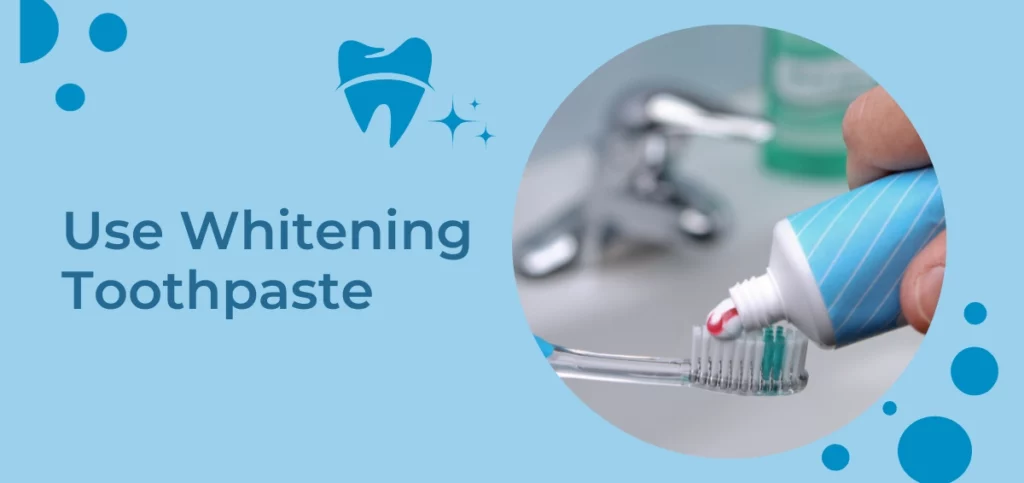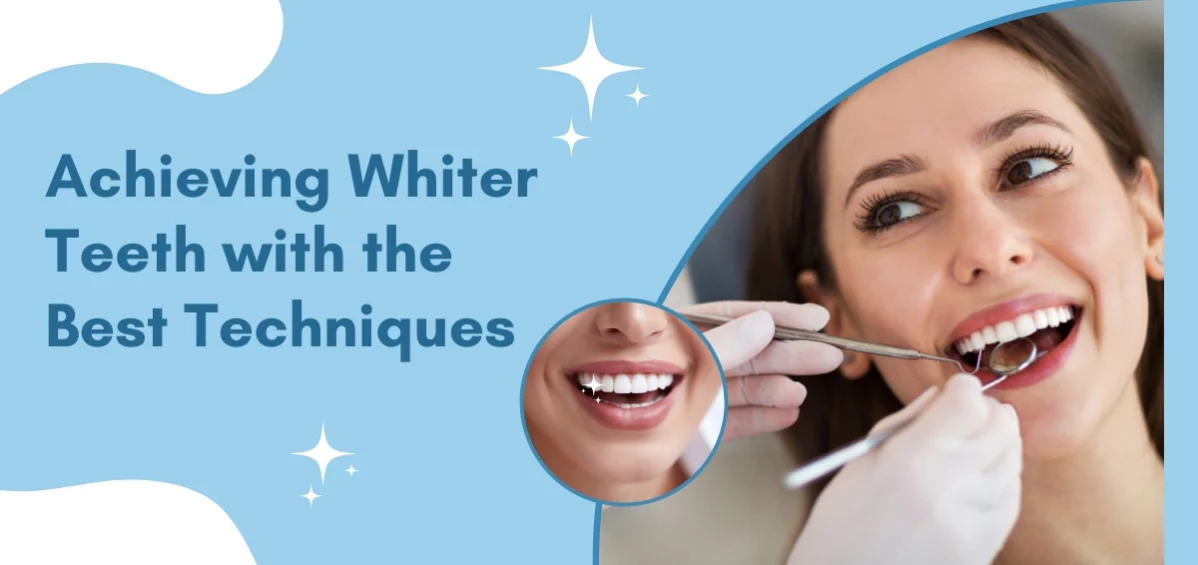Introduction
Enamel, the outer layer of the tooth, gives teeth white color. Your teeth will appear darker if your enamel is naturally thin because it will begin to expose the dentin, which is the deeper tooth structure. It’s also possible for the inner dentin layer to be discolored or stained. Experts refer to these stains as “intrinsic stains” Then there is the staining caused by outside elements, also known as “extrinsic stains.” Stained teeth can develop as we age, but common foods, beverages, and mouthwashes can stain teeth. Although the teeth-whitening market is worth billions of dollars annually, not all techniques are secure or efficient. Here, we will discuss some standard and effective teeth whitening methods to give you a beautiful and sparkling smile.
Read More:- Why You Should Whiten Your Teeth?
Best Teeth Whitening Techniques
The term “teeth whitening” describes several procedures intended to improve the brightness and whiteness of someone’s natural teeth. Options for teeth whitening range from toothpaste with whitening ingredients to dentist-supervised professional teeth whitening procedures. Others bleach intrinsic and extrinsic stains to make them appear lighter in color. Some whitening products work to remove extrinsic stains from your teeth. Let us discuss some of the best teeth whitening techniques to provide you with healthier and whiter teeth than ever before.
Make Use of Teeth Whitening Toothpaste

Carbamide or hydrogen peroxide, hydroxyapatite crystals, and mild abrasives like activated charcoal, baking soda, calcium carbonate, dicalcium phosphate, sodium metaphosphate, zirconium silicate, and calcium pyrophosphate make up the various teeth-whitening toothpastes that are sold on the market.
Most tooth-whitening toothpastes don’t naturally whiten or bleach teeth. But only toothpaste containing hydroxyapatite (HAp) can intrinsically whiten teeth from the inside out. It figuratively “fills in” the gaps in your enamel for a whiter, brighter appearance.
Take Up Using an Electric Toothbrush
Electric toothbrushes are more effective in removing surface stains from teeth than manual toothbrushes. Unlike sonic-powered toothbrushes, oscillating electric toothbrushes work the best at whitening teeth.
Because they frequently include “bells and whistles,” electric toothbrush prices vary widely. There is no proof that specialized heads or extra features, such as Bluetooth, enhance brushing in a way that enhances the effects of teeth whitening.
Get a Dental Teeth Whitening Procedure Done by a Professional
You can anticipate 1-3 sessions at your dentist’s office lasting between 30 and 60 minutes. Each session will involve “painting” the teeth with a high carbamide or hydrogen peroxide (20–43% concentration). The gel is activated with a polymerization light and reapplied several times throughout the session.
Even though hydrogen peroxide can be used, carbamide peroxide is preferred because of its much longer shelf life. Some dentists may employ UV light to speed up the chemical reaction and the whitening process. You might also be given access to a single UV light session that lasts for two hours.
Implement Teeth Whitening Strips

“Whitening strips” refers to small, flexible plastic pieces covered in a whitening gel. Some whitening strips can whiten teeth at home in just one day, even though most are designed to be used over a few weeks. Cutting the Whitestrips down before using them is best because peroxide and the adhesives in most white strips can harm or irritate delicate gum tissue.
Some more “natural” whitening strips use other whitening agents rather than bleaching solutions to remove stains. These additional treatments don’t naturally whiten teeth. It is best to use these teeth whiteners soon after a dental appointment to ensure no untreated cavities because the gel in white strips shouldn’t come into contact with tooth decay.
Attempt Oil Pulling
Although oil pulling doesn’t work very well to whiten teeth, it can remove some surface stains from teeth. But it will stabilize the oral microbiome and lessen gingivitis/bleeding gums inflammation.
The ability of coconut oil to bind to bacteria on the teeth and subsequently remove some surface stains is actual. However, oil pulling will not “whiten” teeth more than regularly gargling with water. On the other hand, oil pulling is a stain removal and prevention technique I’ve combined because it’s so good for oral hygiene.
Maintain a Healthy Oral Hygiene Routine
It’s a natural part of aging that everyone’s teeth eventually turn a little yellow. Good oral hygiene is the best way to prevent teeth from changing color quickly. Your oral hygiene routine should include brushing the teeth at least twice daily, flossing between the teeth, and tongue scraping to remove any existing plaque from your teeth and mouth.
Stop Using Tobacco and Smoking

Cigarettes and other tobacco products accelerate teeth’ aging (yellowing) and cause external tooth staining. In addition to aging tooth enamel and resulting in poor oral health, smoking other substances like THC or vape pens can cause dry mouth. Stop smoking and use any tobacco products to protect your teeth from harm, such as yellowing and weakened enamel.
Obtain Veneers
Veneers are long-lasting, artificial tooth coverings that can restore the aesthetics of teeth with permanent damage without the cost or hassle of dental implants. Veneers serve as a cover for your natural teeth rather than a teeth-whitening procedure. Because veneers cannot be laterally whitened, you and your dentist will decide on a tooth color together.
Conclusion
The type of discoloration you have – intrinsic vs. extrinsic – determines how effective a teeth-whitening procedure will be. Receiving a professional dentist assessment is the best way to find the best answer to that question. Never forget that there are no guarantees with any teeth-whitening method. Fortunately, it turns out that your teeth’s degree of whiteness is much less noticeable than you might have thought.




